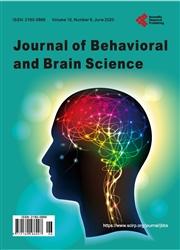Central Brain Herniation Secondary to Influenza-Related Encephalopathy in a Pontocerebellar Hypoplasia Child: A Case Report and Review
引用次数: 0
Abstract
Influenza-associated encephalopathy (IAE) can perform as varying patterns of neuroimaging. Central brain herniation (CBH) secondary to IAE is rare; it may be a bad prognosis. Here, we presented a 4-year-old girl with influenza who had a pontocerebellar hypoplasia (PCH) history; she performed the second Magnetic Resonance Imaging (MRI) on Day 6 from onset, showed the diffuse edema and the occurrence of central herniation; the medulla was “Z-like” folded and the basal cisterns were obliterated completely. Finally she was declared dead. The imbalance between supratentorial and infratentorial pressure can lead to the occurrence of CBH. Severe edema relates to IAE and unstable structure of the posterior fossa might be the main reason for the herniation. MRI is helpful in early diagnosis. Early treatment of cerebral edema in patients with congenital abnormalities of the posterior fossa is vital for their management.桥小脑发育不全儿童继发于流感相关脑病的中枢性脑疝:一例报告和回顾
流感相关性脑病(IAE)可以表现为不同的神经影像学模式。继发于IAE的中枢性脑疝(CBH)是罕见的;这可能是一个糟糕的预后。在这里,我们介绍了一名患有流感的4岁女孩,她有马尾神经发育不全(PCH)病史;她在发病第6天进行了第二次磁共振成像(MRI),显示弥漫性水肿和中心疝的发生;髓质呈Z形折叠,基底池完全消失。最后她被宣布死亡。幕上和幕下压力之间的不平衡可导致CBH的发生。严重水肿与IAE有关,后颅窝结构不稳定可能是导致疝的主要原因。MRI有助于早期诊断。先天性后颅窝异常患者脑水肿的早期治疗对其治疗至关重要。
本文章由计算机程序翻译,如有差异,请以英文原文为准。
求助全文
约1分钟内获得全文
求助全文

 求助内容:
求助内容: 应助结果提醒方式:
应助结果提醒方式:


